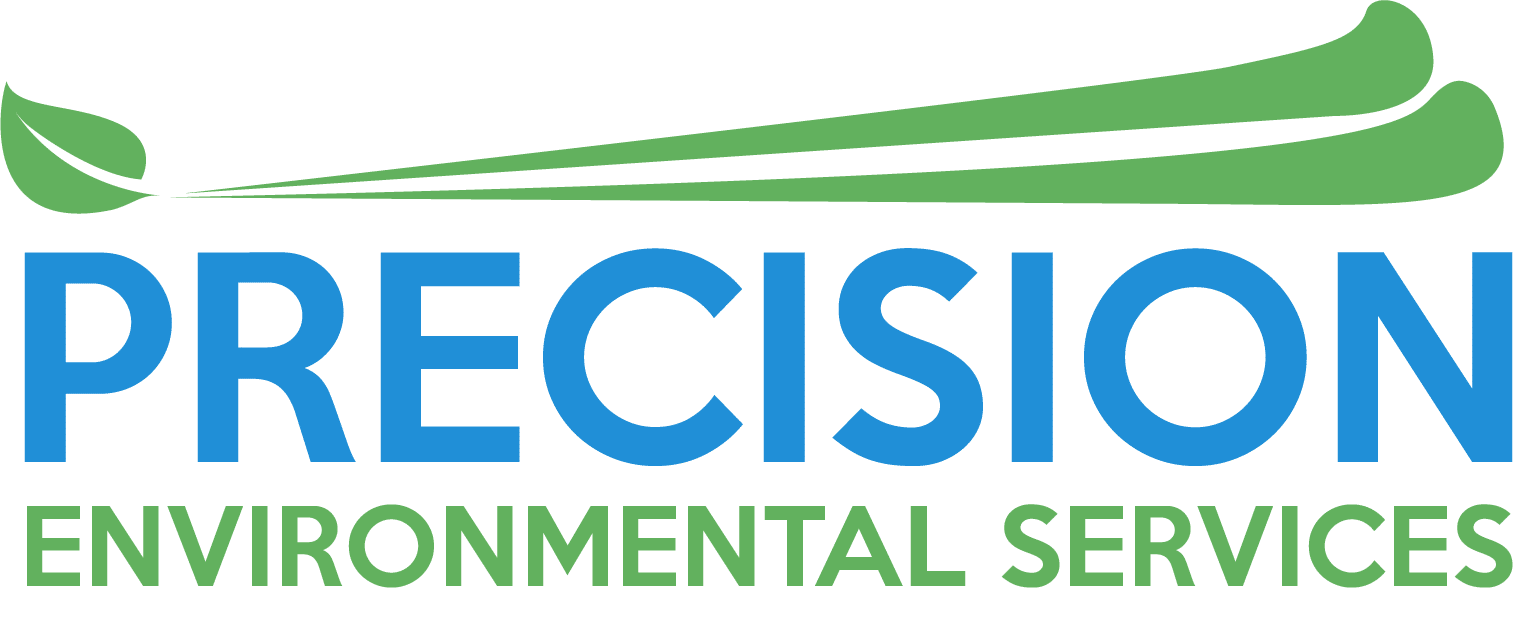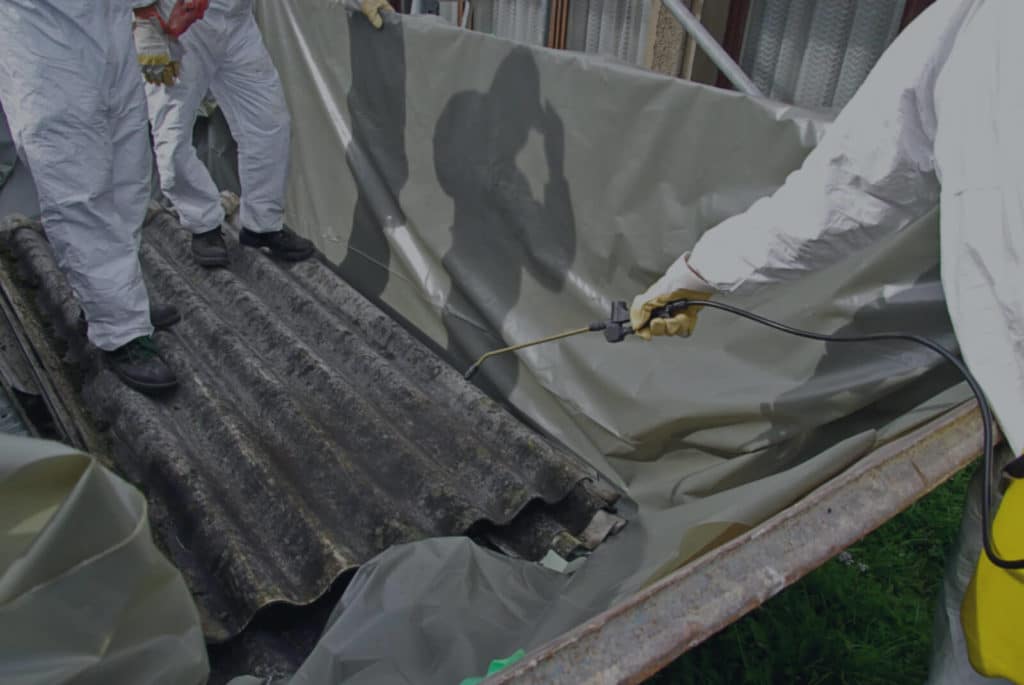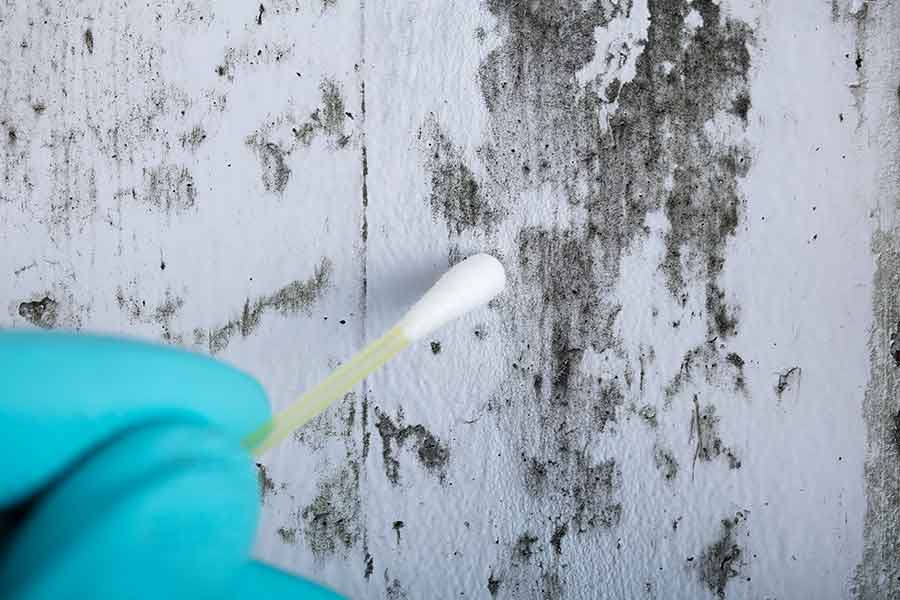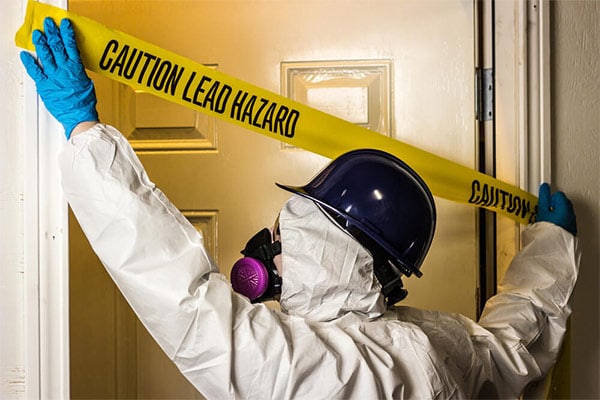Precision Environmental Service in Fort Worth TX
Get Estimate
Fort Worth Environmental Management Services
Boasting more than 10 years in the field, Precision Environmental Services is devoted to offering clients an environment that is both secure and health conscious. Specializing in expert environmental consultation, which encompasses air quality assessments and asbestos evaluations, we help you meet regulatory standards and empower you with knowledge for sound decision-making. Known for our punctuality and budget adherence, Precision has built long-term partnerships through our reliable, cost-effective services. We are eager to fulfill your project requirements and timelines.
Our History
With more than 20 years of expertise, Precision Environmental Services is dedicated to ensuring a secure and health-focused setting for our clientele. Specializing in comprehensive environmental advisory services, we facilitate adherence to regulatory guidelines while equipping our clients to make well-informed choices. Precision is renowned for delivering timely, budget-conscious professional services.
Why Us?
Our commitment to swift, high-caliber solutions at competitive rates has fostered enduring bonds with our current clients. We anticipate exceeding your project objectives and timelines.
Our Services
Asbestos Services
Asbestos Inspection
Specialists in asbestos management are skilled in inspecting for and handling materials containing asbestos. Depending on the specific item in question and the needed remedial actions, you may require a general asbestos expert or a specialist for specific asbestos-containing materials. Firms like Precision Environmental Service offer comprehensive assessments, sample collection of suspected materials, condition analysis, and expert advice on necessary remediations and certified personnel to perform them. Generally, materials in good condition don’t require testing unless disturbance is anticipated.
Mandatory for both safety and legal compliance, asbestos evaluations are crucial prior to initiating any demolition or renovation activities on residential or commercial premises. Such projects are categorized as activities that could disturb asbestos-containing materials, necessitating pre-project assessments. This requirement is typically enforced at the municipal level, with local authorities mandating asbestos evaluations before granting renovation or demolition permits.
Evaluations should be conducted by a certified inspector, complete with a report identifying any asbestos-containing materials that may be affected by the planned demolition or renovation activities.
For any further queries regarding asbestos assessments or testing, consider reaching out to experts at Precision Environmental Services.
Read more about Asbestos Services
Asbestos Survey
Asbestos evaluations, also known as asbestos surveys, are instrumental in safeguarding the health of building occupants from this hazardous material. Mandated by the US EPA, an asbestos survey is obligatory before any renovation or demolition activities to identify potentially disturbed asbestos-containing materials. We advocate for asbestos inspections and air quality tests in older edifices where aging asbestos materials might be compromised, as well as post-removal or repair operations to confirm absence of airborne asbestos fibers.
Compliance with EPA and NESHAP standards necessitates conducting an asbestos survey before renovation or demolition of public buildings. Initiating any project also requires notification to the Texas Department of State Health Services.
Precision Environmental Service provides TDSHS-accredited asbestos surveys and caters to the DFW and North Central Texas regions. We execute the necessary asbestos evaluations for obtaining building permits in Texas and guide our clients in interpreting assessment results, offering budget-friendly solutions for compliance with both State and Federal Asbestos Regulations.
Asbestos Remediation
Asbestos has a significant historical presence in Texas, notably in major urban areas like Fort Worth. This implies that many older buildings, defunct shipyards, and factories still contain substantial amounts of this hazardous fiber. When such structures undergo renovation, workers are at risk of inhaling these fibers.
Precision Environmental Service specializes in meticulous asbestos remediation and abatement, employing a seasoned team and cutting-edge technology to ensure your project is completed efficiently and thoroughly, mitigating future concerns.
Well-versed in Texas state compliance regulations and safety protocols, we ensure that your property meets all legal and health standards. Our expertise spans numerous residential and commercial projects across Texas, earning us a local reputation for timely service and proven outcomes. Federal and Texas-specific OSHA guidelines outline the safety measures for workers involved in asbestos abatement, along with standardized methods for the removal of asbestos-containing materials.
Asbestos Air Quality Testing
Asbestos poses no health risks as long as it remains encapsulated within its original materials. However, disintegration due to age or disturbance during renovations or demolitions can release fibers into the air, making it a serious health concern.
There are two primary methods for asbestos air testing:
- Phase Contrast Microscopy (PCM)
- Transmission Electron Microscopy (TEM)
PCM is quicker and less expensive but may not detect extremely fine fibers and cannot differentiate between asbestos and other fibers like fiberglass. It involves drawing an air sample through a filter and examining a section of that filter under a microscope.
In contrast, TEM is more accurate and detailed, capable of identifying even minute asbestos fibers. It involves sending air samples to a lab where they are analyzed using a sophisticated electron microscope. Though more reliable, it is also costlier and more time-consuming than PCM.
For asbestos removal projects, PCM is often chosen for its speed and affordability, while TEM is utilized when a higher level of accuracy is essential. We generally recommend TEM testing post-asbestos removal before area re-occupancy.
Mold Services
Mold Inspections
Mold inspection vs. mold testing
Mold inspection focuses on detecting the presence of mold and usually quantifies the extent of the issue, often in terms of square footage. Mold testing, on the other hand, aims to identify the specific mold variety in your home and the concentration of airborne spores.
It’s important to note:
- Achieving the stringent conditions for an accurate scientific mold test is challenging in residential settings, leading to potentially inconsistent results across different tests.
- All indoor environments naturally contain mold spores from external sources, so tests often identify a wide array of types, many of which may not be actively growing indoors.
- The EPA has not established guidelines for acceptable levels of mold or mold spores within residential spaces.
Read more about Mold Services
Where is Mold discovered in the home?
Mold commonly manifests in damp spaces within homes as small black circles or thread-like white formations, often accompanied by a musty odor. While it serves an ecological role outdoors in decomposing organic matter, indoor mold growth occurs when spores land on wet or moist surfaces. It’s crucial to dry water-affected areas within 24-48 hours to inhibit mold growth.
Signs like visible mold, musty smells, apparent water damage, poorly maintained HVAC systems, or structural flaws call for a comprehensive inspection. Through a combination of visual examination and air, tape, or swab sampling, inspectors can pinpoint hidden sources of mold, water damage, and indoor pollutants.
Air sampling aims to identify airborne contaminants, both type and amount. This method becomes necessary when visual inspections are inconclusive but odors or allergic symptoms indicate an issue. Air samples are collected from both indoor and outdoor environments for comparative analysis, generally while the HVAC system is operational.
Tape or swab sampling is conducted on visibly moldy areas using a sterile swab, primarily to identify the specific mold species present.
After visual inspections and sampling, inspectors produce a detailed report based on lab analysis, which can be used for disclosure and remediation recommendations. In all cases, if mold is found, the root cause—often water damage—needs to be addressed to prevent future issues.
Mold Assessments
In the assessment of indoor air quality, it’s essential to consider the sensitivity levels of current or future occupants towards indoor environmental pollutants. Although there are no established Federal or State guidelines for indoor mold levels, Precision Environmental Service adheres to protocols outlined by the Texas Department of State Health Services (DSHS), the Environmental Protection Agency (EPA), and Texas Guidelines for Assessment and Remediation of Fungi in Indoor Environments.
Mold inspections and testing serve as effective solutions to common indoor air quality issues. Certified mold inspectors understand that mold-related issues, from musty odors to potential health risks from fungal spores, are among the most prevalent concerns for homeowners and potential buyers. Consequently, mold remains the primary environmental factor of interest.
Mold Remediation
A significant infestation of black mold can pose a dual threat, jeopardizing both your property and well-being. Given the ubiquitous presence of tiny mold spores indoors and outdoors, achieving complete mold eradication is a formidable challenge.
Remediation efforts always entail the removal of existing mold while ensuring the safety of workers and property occupants, alongside preventing future growth by addressing the moisture source. Mold problems, apart from causing significant disruptions, can constitute a severe health hazard for individuals exposed within commercial properties. Even minor water intrusions, such as slow roof leaks or loose pipe fittings, can lead to mold invasions. Every hour spent on cleanup translates to lost profits and productivity. If you suspect mold issues in your property, prompt action is crucial. Contact Precision Environmental Service for a rapid and efficient response.
Mold remediation techniques have evolved from the practices employed in asbestos abatement, particularly in containing airborne mold particles generated during demolition and ensuring worker safety. Notably, the key difference lies in the fact that water should not be used in mold work to control airborne particles, unlike asbestos abatement.
Assessing the extent of mold and developing remediation plans should ideally be entrusted to experienced professionals, followed by execution by certified mold remediation experts.
Mold Air Quality Tests
Incorporating air sampling into a mold inspection serves multiple crucial purposes. Mold spores are minuscule and not visible to the naked eye, making laboratory analysis of air samples invaluable for identifying the specific mold types present. Furthermore, analyzing these samples helps establish the extent and severity of a mold issue, as well as assess potential human exposure to mold spores. Post-remediation, new samples are typically collected to verify the successful elimination of all mold.
Air samples offer valuable insights into the presence of mold spores within a home’s interior. This process involves using a pump to draw air through a collection device that captures mold spores. The collected air sample is then sent to a laboratory for thorough analysis. The utilization of air sampling by Precision Environmental Service inspectors during mold inspections has become a standard practice.
Infrared Thermography
Mold can pose various health risks, ranging from allergic reactions to the potential toxic effects of mycotoxins. Given these potential health concerns, it is of paramount importance to be able to identify mold within a residence. Infrared thermography is a valuable method for detecting mold in homes.
Infrared cameras, which capture images of heat radiation, enable technicians to identify hidden moisture within walls that is typically imperceptible to the human eye. Such moisture and associated conditions can create an environment conducive to mold growth.
Read more about Infrared Thermography
Mold-related issues can be detected using infrared cameras even before visible signs or noticeable odors emerge. However, the effectiveness of an infrared camera alone is limited. To make informed decisions regarding potential mold growth, technicians also need temperature measurements. To address this, specialized cameras equipped with precise temperature measurement capabilities are employed. By comparing temperature readings with infrared data from similar structures in the vicinity, technicians can assess whether a significant temperature increase might encourage mold growth.
When a technician identifies an area suspected of mold growth, the camera becomes an invaluable tool for documenting details. This documentation aids individuals who may not be familiar with mold’s appearance or its potential consequences in comprehending the nature of the issue within the property being inspected. This information plays a crucial role in the decision-making process for homebuyers or sellers. Upon recording the information, sellers are obligated to disclose it to any prospective buyers.
Potential homebuyers can gauge the extent of the mold issue within the property they are considering, helping them make informed purchase decisions. While other methods exist for detecting mold in a home, such as physical inspection by removing drywall, this approach lacks accuracy because the conditions conducive to mold growth are not always visible to the naked eye. Additionally, it can be costly, as any removed materials would need replacement. Thus, unless one intends to completely renovate the drywall in a house, this method is not a reliable means of mold assessment.
Moisture Mapping
The preference of the majority of homeowners and business proprietors is to prevent mold growth in their properties. However, very few proactively seek out mold until it reaches an advanced stage, when it exhibits its most common indicators: musty odors and visible staining on building materials.
The presence of mold in structures poses several challenges:
- Mold generates unpleasant, musty odors.
- Mold growth can lead to the degradation of walls, floors, ceilings, and structural components, elevating the risk of sudden structural failure.
- Certain mold varieties can release harmful spores, potentially causing respiratory issues for occupants of the building.
Read more about Moisture Mapping
Detecting mold risks before they escalate into significant problems is crucial for the safety of any structure. The challenge lies in the fact that the typical signs of mold growth, such as stained walls or ceilings and musty odors, often become apparent only after the mold has had ample time to establish itself.
When it comes to assessing mold risk, moisture meters stand out as indispensable tools for mold remediation professionals, enabling them to perform moisture mapping. This is pivotal because, as highlighted by the EPA, “there is no practical way to eliminate all mold and mold spores in the indoor environment; the key to controlling indoor mold growth is moisture control.”
Mold spores are virtually ubiquitous and can proliferate swiftly when they encounter ideal conditions. Therefore, to thwart mold growth, it is imperative to identify and eliminate potential moisture-rich areas where mold could thrive. This is where moisture meters play a vital role.
Modern moisture mapping tools are exceptionally precise, capable of pinpointing concealed pockets of moisture within surfaces. Identifying such moisture within walls and floors can indicate areas where the risk of corrosion and mold growth may exist. For the effective eradication of mold and hazardous fungi, a thorough assessment is imperative.
The most comprehensive and meticulous evaluations of moisture, shedding light on potential mold growth areas, can be achieved using state-of-the-art, high-quality moisture meters.
Lead Based Paint Services
Lead Based Paint Inspections and Lead Based Paint Assessments
Lead exposure is a matter of great concern. To safeguard both you and your family from potential lead hazards, seeking guidance from a certified risk assessor is advisable. They can help you thoroughly evaluate the report and assist you in determining whether abatement (complete removal of lead hazards) or ongoing vigilant maintenance (effective management of potential lead hazards) is the most suitable option for your situation. If you opt for abatement, it is crucial to ensure the engagement of a qualified and licensed abatement specialist.
Read more about Lead Based Paint Services
What is the difference between an evaluation and risk assessment?
An assessment involves a meticulous, surface-by-surface examination aimed at determining the presence and location of lead-based paint within a residence or child-occupied facility. Legally, these assessments can only be conducted by qualified inspectors or risk assessors. Lead-based paint inspections are specifically focused on confirming the existence of lead-based paint. They serve as valuable tools, especially when assessing whether a property contains lead-based paint before purchasing, leasing, or undertaking renovation work. These inspections also help pinpoint potential sources of lead exposure at any given time.
On the other hand, a risk assessment encompasses an on-site investigation that identifies the presence, type, severity, and specific locations of lead-based paint hazards, including those in paint, dust, and soil. It further offers recommendations for effectively managing these hazards. Risk assessments, like inspections, can only be legally carried out by certified risk assessors. They prove particularly beneficial in identifying sources of current exposure and devising potential solutions.
For added convenience, individuals can opt for a combined inspection and risk assessment. Regardless of the chosen approach, the risk assessor or inspector will furnish a comprehensive written report summarizing their findings.
Lead based paint remediation and removal
Lead-based paint remediation is a specialized task that should be entrusted to a professional company accredited by the U.S. Environmental Protection Agency (EPA). This accreditation serves as a guarantee that the business possesses the necessary expertise not only in addressing lead-based paint but also in water, mold, and fire restoration. Managers, inspectors, and technicians within an EPA-accredited lead-safe business undergo comprehensive training and hands-on experience to acquire the skills and knowledge required for the safe removal and management of lead-based paint and its contaminated materials.
A federal law enacted on April 22, 2010, imposes a significant requirement. It mandates that contractors engaged in renovation, repair, and painting projects that disturb an area larger than 6 square feet of paint in structures constructed before 1978 must undergo training and certification in work practices aimed at preventing lead contamination. This regulation applies to work carried out in residences, daycare facilities, and educational institutions.
Professionals are well-versed in the appropriate procedures for minimizing, controlling, and containing lead dust generated during the removal of lead-based paint. Their expertise extends beyond lead remediation and includes water damage restoration, mold inspection and removal, as well as fire damage renovation.
Level I & II Environmental Site Assessments
A Phase I and/or Phase II Environmental Site Assessment (ESA) is a crucial tool for individuals involved in both buying and selling property. The primary objective of any ESA is to identify potential or existing environmental contamination liabilities associated with specific properties. An appropriate ESA is a comprehensive report that must be conducted by an Environmental Professional to provide the necessary liability protections under the Comprehensive Environmental Response, Compensation, and Liability Act (CERCLA). It’s essential to strictly adhere to the standards outlined in international ASTM guidelines and the EPA’s All Appropriate Inquiry (AAI) regulation. MSSE ensures full compliance with all existing standards for all ESAs performed. Clients will receive detailed reports conducted by an Environmental Professional to ensure proper liability protections.
The purpose of this environmental assessment is to provide an impartial, expert opinion on potential environmental risks, if any, related to the subject property. It aims to identify recognized environmental conditions at the property, which refers to the presence or likely existence of hazardous substances or petroleum products in, on, or around the property. These conditions may result from a release to the environment, conditions indicating a release to the environment, or conditions that pose a significant risk of a future release to the environment. It’s important to note that de minimis conditions, which typically do not pose a risk to human health or the environment and would not typically lead to government enforcement actions, are not considered recognized environmental conditions.
The identification of recognized environmental conditions on the subject property may impose environmental liabilities on property owners or operators, diminish the property’s value, or restrict its use or marketability. Consequently, further investigation may be necessary to assess the extent and magnitude of potential environmental liabilities.
Indoor Air Quality Tests
Why is Indoor Air Quality Important?
Understanding Indoor Air Quality in Residences, Educational Institutions, and Workplaces
Certain airborne pollutants can pose heightened risks to vulnerable individuals, including children, the elderly, and those with underlying health conditions.
A significant portion of our daily lives is spent indoors, whether at home, in schools, or in workplaces. The quality of the air we breathe in these indoor environments can have implications for our health. Airborne contaminants in these settings encompass a range of substances, including chemicals, gases, and living organisms such as mold and insects.
Numerous sources contribute to indoor air contamination within homes, schools, and offices. Some of these contaminants can lead to health issues like irritated eyes, nasal and throat discomfort, headaches, or fatigue. Others have the potential to initiate or exacerbate allergic reactions, respiratory ailments (such as asthma), cardiovascular diseases, cancer, and various chronic conditions of considerable severity. In certain instances, individual contaminants, when present at elevated concentrations, can even result in fatalities, as is the case with carbon monoxide poisoning.
Read more about Indoor Air Quality Tests
How is Indoor Air Quality (IAQ) Measured?
According to the EPA, indoor air pollutants can result in a wide range of health issues, ranging from immediate discomfort like nasal and eye irritation to long-term health concerns such as cancer and heart disease.
Maintaining clean air within your home offers significant advantages. Reduced exposure to factors like dust or pet dander can lead to fewer instances of coughing and fewer complications with respiratory issues, such as asthma or COPD.
However, not all indoor air contaminants are readily apparent. Some are completely invisible and lack any noticeable odor. Certain pollutants, like lead or asbestos, may have been present in a building for many years, making their detection and removal even more challenging.
To address indoor air quality concerns effectively, it’s crucial to identify the specific contaminants present in the air. This necessitates conducting air quality testing.
When considering air quality testing, you have two primary options: conducting the test yourself or hiring a professional. Both options have their merits, so let’s explore some specifics to determine which might be the best fit for your home.
Common forms of indoor air quality tests include:
- Radon Tests
- Mold Tests
- Carbon Monoxide Tests
- Airborne Lead Tests
- Volatile Organic Compound Tests
- Professional Air Testing
For a highly accurate and reliable reading, hiring a professional service may be the preferred choice. However, it’s worth noting that the cost of professional testing can vary significantly due to multiple factors.
One often overlooked aspect of indoor air quality in commercial buildings is odors. While odors typically do not pose an immediate health risk, they can impact productivity and result in complaints from occupants. Additionally, the presence of foul odors in new construction or recently renovated spaces can indicate broader issues such as high concentrations of volatile organic compounds (VOCs).
It’s crucial to conduct odor assessments throughout the building, as one area may be unaffected while another exhibits a problem. Odors can be attributed to HVAC issues, like poorly placed intakes or organic material buildup within the system. They can also be linked to VOCs and other indoor air quality concerns. When odors are detected, it’s essential to investigate the root cause and plan remediation accordingly.
Checking for VOC’s
Volatile Organic Compounds, commonly referred to as VOCs, are the gaseous counterparts of particulate matter. VOCs have the potential to pose health hazards. These compounds, emitted by substances like paint, adhesives, vinyl wall coverings, and certain furnishings, can lead to respiratory discomfort, headaches, allergic reactions, fatigue, dizziness, and other unpleasant and potentially harmful symptoms. In buildings without prior air quality concerns, it’s common to detect the presence of over 100 different VOCs.
Newly constructed buildings and recently renovated spaces are particularly susceptible to elevated concentrations of VOCs due to the use of fresh paint, adhesives, and other materials containing VOCs. To ensure a safe indoor environment, it’s advisable to conduct air sampling and testing before occupancy. This helps gauge VOC levels and determines whether remediation measures are necessary.
When elevated VOC levels are identified, typical remediation strategies involve a combination of enhanced ventilation and temporary filtration. These measures are implemented until the materials responsible for VOC emissions have completed their primary off-gassing phase.
Pre-post Occupancy IAQ Sampling
Few moments in life compare to the satisfaction of witnessing the grand opening of a brand-new building or a meticulously renovated space. After months, and sometimes years, of meticulous planning, demolition, construction, and finishing touches, the moment has finally arrived.
At this juncture, the last thing on your mind should be concerns about the indoor air quality within the building. Unfortunately, poor indoor air quality is a common issue in new constructions and recently refurbished areas. The processes and materials involved in demolition, construction, and furnishing can release pollutants into the air, often remaining unnoticed until the building is complete and occupancy begins.
To preempt potential issues and ensure the smooth operation of your facility, it’s prudent to assess indoor air quality before your occupants move in. Pre-occupancy indoor air quality testing offers a straightforward and cost-effective means of ensuring the well-being and satisfaction of your occupants. For added peace of mind, you may consider enlisting the services of a reputable company to oversee proper sampling and testing. Our team of experienced environmental consultants is readily available to discuss your specific requirements.
Precision Environmental Services performs their services in multiple counties in North Central Texas. Counties to include:
Tarrant, Johnson, Parker, Denton, Wise, Dallas and Hood
Precision Environmental Services provides services to:
All these cities in the Fort Worth area: Aledo, Alvarado, Arlington, Azle, Bedford, Burleson, Cedar Hill, Colleyville, Coppell, Cresson, Crowley, Dallas, Euless, Flower Mound, Fort Worth, Grand Prairie, Grapevine, Haltom City, Haslet, Hurst, Irving, Joshua, Justin, Keller, Kennedale, Lillian, Mansfield, Naval Air Station Jrb
All these zip codes in the Fort Worth area: 75019, 75022, 75028, 75038, 75039, 75050, 75051, 75052, 75054, 75060, 75061, 75062, 75063, 75104, 75211, 75236, 75249, 76001, 76002, 76006, 76008, 76009, 76010, 76011, 76012, 76013, 76014, 76015, 76016, 76017, 76018, 76020, 76021, 76022, 76028, 76034, 76035, 76036, 76039, 76040, 76051, 76052, 76053, 76054, 76058, 76060, 76061, 76063, 76071, 76078, 76085, 76092, 76102, 76103, 76104, 76105, 76106, 76107, 76108, 76109, 76110, 76111, 76112, 76114, 76115, 76116, 76117, 76118, 76119, 76120, 76123, 76126, 76127, 76129, 76131, 76132, 76133, 76134, 76135, 76137, 76140, 76148, 76155, 76164, 76177, 76179, 76180, 76182, 76244, 76247, 76248 and 76262
Prominent Places Near Fort Worth, Texas
Prominent Neighborhoods Near Fort Worth Texas
Heritage, Ranchette Estates, Village of Woodland Springs, Harvest Ridge, Watauga, Blue Mound, Summefields, Park Glen, Summerbrook, Basswood Park, Fossil Park, Stonewood, Stone Creek, Saginaw, Eagle Mountain, Pecan Acres, Avondale, Lake Crest Estates, Highlands, Richland Hills, River Trails, Garden of Eden, Far Greater Northside Historical, Diamond Hill, John T White, Cobblestone, Hollow Hills, Eastchase, Far East Fort Worth, Sandybrook, Bonnie Brae, Sylvan Heights West, Carter Riverside, Scenic Bluff, United Riverside, Eastern Hills, Woodhaven, Ryanwood, Handley, Cookes Meadow, Carver Heights East, Brentwood-Oak Hills, Arc, White Lake Hills, Meadowbrook, North Side, Belmont Terrace, Marine Park, Jenkins Heights, Greenfield Acres, Near East Side, Sundance Square, Butler, Upper West Side, Sunset Terrace, Greenway, Rock Island, Riverbend, Calloway Park, Fair Oaks, Mitchell Boulevard, Caville, Burchill, Hillside Morningside, Historical Southside, Glenwood Triangle, Morningside, West Morningside, Como, Arlington Heights, Monticello, Crestline Area, Linwood, Echo Heights, Eastland, South Edgewood, Glencrest, Ryan Place, Worth Heights, South Hemphill Heights, Mistletoe Heights, Rosemont, Silver Ridge, Willow Wood, Blue Haze, Vista West, Chapel Creek, Carter Park, Westcliff, Tanglewood, Ridgmar, Mira Vista, Quail Ridge Estates, Hulen Bend Estates, Candleridge, Wedgewood.
What Makes Fort Worth TX Special?
Fort Worth, Texas, holds a unique charm that sets it apart from other cities in the Lone Star State. Known for its rich Western heritage and cowboy culture, Fort Worth seamlessly blends a vibrant modern urban scene with a deep appreciation for its historical roots. The city’s Stockyards National Historic District is a testament to its cowboy legacy, offering daily cattle drives and a taste of the Old West. Beyond this, Fort Worth boasts a thriving arts and cultural scene, highlighted by the renowned Kimbell Art Museum and the Modern Art Museum of Fort Worth. It’s a city that caters to both history enthusiasts and contemporary art lovers. The warm Texan hospitality and a dynamic culinary scene make Fort Worth a delightful destination, offering a unique blend of tradition and progress that captures the essence of the American Southwest.
Things to Do Near and Around Fort Worth Texas
- Stockyards National Historic District
- Address: 130 E. Exchange Avenue, Fort Worth, TX 76164
- Description: Step back in time to the Old West at the Stockyards National Historic District. Here, you can witness daily cattle drives, visit the Texas Cowboy Hall of Fame, and explore a range of Western-themed shops and restaurants.
- Kimbell Art Museum
- Address: 3333 Camp Bowie Boulevard, Fort Worth, TX 76107
- Description: The Kimbell Art Museum is renowned for its exceptional art collection, featuring works by master painters like Michelangelo, Rembrandt, and Monet. The museum’s architectural beauty is equally impressive, designed by the renowned architect Louis Kahn.
- Fort Worth Zoo
- Address: 1989 Colonial Parkway, Fort Worth, TX 76110
- Description: The Fort Worth Zoo is a family-friendly destination with a diverse range of animals from around the world. It’s known for its conservation efforts and immersive exhibits, making it a favorite for visitors of all ages.
- Sundance Square
- Address: 420 Main Street, Fort Worth, TX 76102
- Description: Sundance Square is the heart of downtown Fort Worth, offering a vibrant mix of shopping, dining, entertainment, and cultural attractions. The square often hosts live music events, and its historic architecture adds to the charm.
- Fort Worth Botanic Garden
- Address: 3220 Botanic Garden Boulevard, Fort Worth, TX 76107
- Description: Spanning 110 acres, the Fort Worth Botanic Garden is a serene oasis showcasing a wide variety of meticulously landscaped gardens, including the Japanese Garden, Rose Garden, and more. It’s a perfect place for nature enthusiasts and relaxation.
- The Modern Art Museum of Fort Worth
- Address: 3200 Darnell Street, Fort Worth, TX 76107
- Description: This contemporary art museum features an impressive collection of modern and contemporary artworks by renowned artists. The striking architecture of the building, designed by Tadao Ando, is a work of art in itself.
Contact us
- Precision Environmental Services - Flower Mound
6104 Cedar Sage Trail
Flower Mound, Texas 76226 - 940-597-2673
- Precision Environmental Services - Fort Worth
702 Houston Street
Fort Worth, Texas 76102 - 940-597-2673







